Build Your Grow Room
Welcome to our step-by-step grow tent builder. Whether you're a seasoned gardener or just starting out, we're here to provide you with all the information you need to create a successful indoor garden. Select items from each category as you move down the page, if you're not sure or you would like to read more, click the 'need help' button to read some tips. We're excited to share our knowledge with you and help you on your gardening journey. Let's get started!
1. Select Your Grow Space Size
2. Choose a Grow Tent
Selecting the Perfect Grow Tent for Your Garden
Choosing the right grow tent can make all the difference for your garden's success. Keep in mind the space you have available, your budget, and the growing needs of your plants. For those using LED lighting, a tent taller than 2 meters might not be necessary, as the additional height is most useful for HID lighting. However, if your space allows for it, Gorilla tents offer extra height and sturdiness, making them a premium choice.
We have included a rough guide for plant spacing, it is important for optimal growth and pest prevention that there is adequate airflow between plants.
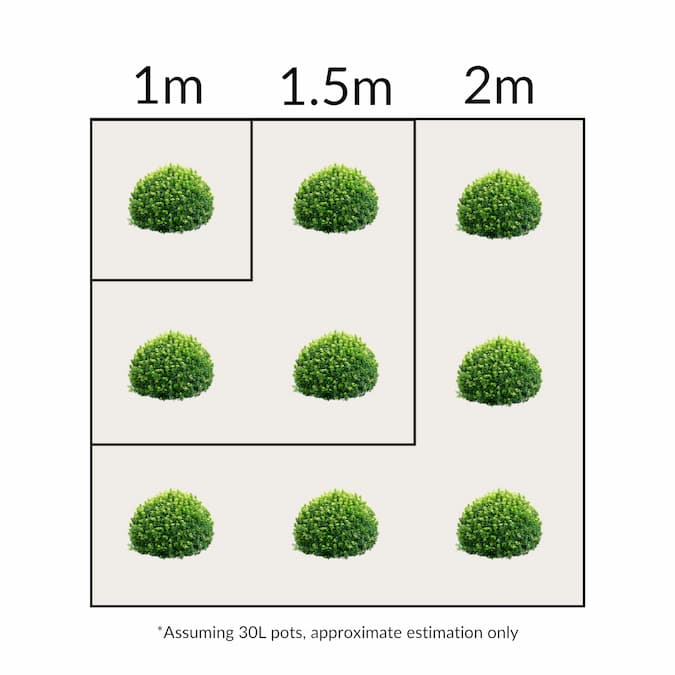
Check out our Indoor beginner eBook to learn more!
https://www.aquagardening.com.au/learn/indoor-beginner-ebook/
3. Choose a Grow Light
Choosing the right grow light for your tent
LED grow lights are energy-efficient and can be customized to meet the specific needs of different plant species. They also produce less heat compared to HID grow lights, reducing the risk of plant damage or fire hazards. These lights are more expensive upfront, but they save money over the long run due to lower heat output, less power use, and the long life of the LED diodes.
HID lighting including HPS, MH, and CMH lamps have been used for indoor growing in the past, different types of HID lamps also offer differing spectrums. While HID grow lights are effective, they also generate a significant amount of heat and require proper ventilation and cooling to prevent damage to plants. Lamps should generally be replaced every few seasons so there are some ongoing costs to keep fixtures up and running.
When choosing a grow light you should consider the size of your grow space and choose a light that can adequately cover that area. You should also think about the wattage and spectrum of the light, as different plants have different light requirements. We have provided a guide for selecting the right wattage for your LED lights.
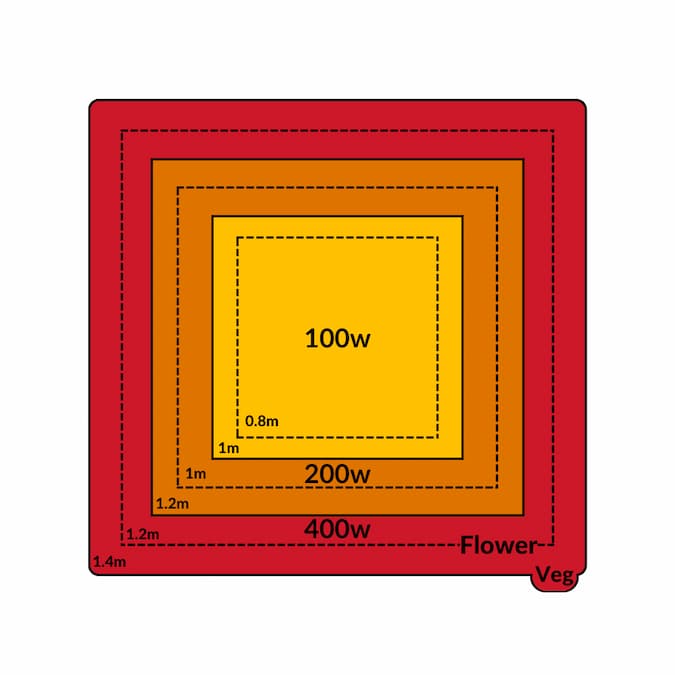
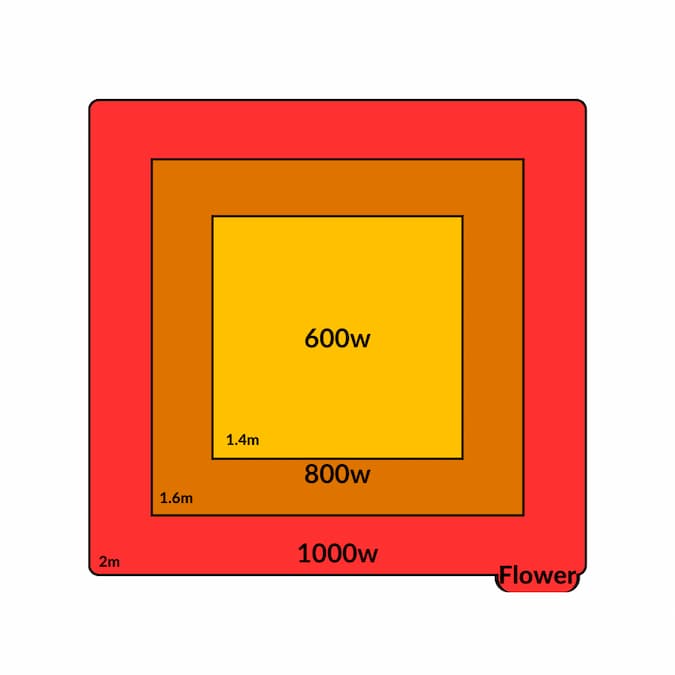
To light large tents, greater than 2m you will likely need multiple light fixtures. We have outlined the lighting options in the following article. Check it out to select the right lights: https://www.aquagardening.com.au/learn/how-to-design-grow-lights-layout/
Check out our Indoor beginner eBook to learn more!
https://www.aquagardening.com.au/learn/indoor-beginner-ebook/
4. Choose a Fan
Which fan should I choose?
Ventilation plays a vital role in managing the temperature and humidity of your growing environment, as well as refreshing the co2 in your space. There are many different options to consider when choosing a fan which we will discuss below. A major consideration for many people is the fans noise level, consider where you will have your garden to your noise preferences. Quiet and silenced fans are available, and there are aftermarket fan silencers that can be used to mitigate fan noise.
EC fans are more energy-efficient than AC fans, thanks to their use of DC power and better control of fan speed. They also have a longer lifespan and require less maintenance. However, AC fans are simpler in construction and more cost-effective.
Our included graphic shows what are the characteristics of some of the common fan designs you might choose.
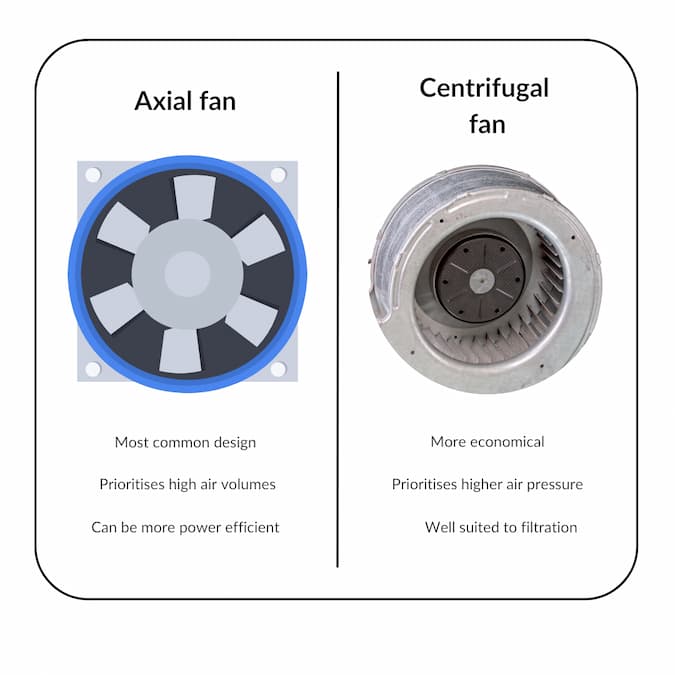
Learn more about ventilation layout here: https://www.aquagardening.com.au/learn/how-to-set-up-ventilation-in-a-grow-tent/
Check out our Indoor beginner eBook to learn more!
https://www.aquagardening.com.au/learn/indoor-beginner-ebook/
5. Choose a Filter
What's the best carbon filter?
Carbon filters prevent odours from escaping indoor grow rooms. These filters consist of activated carbon that absorbs and traps the odor molecules, preventing them from escaping into the surrounding air. The air from the grow space is pulled through the filter by a fan, and the clean air is then released back into the room. Using a larger (longer) carbon filter will improve longevity.
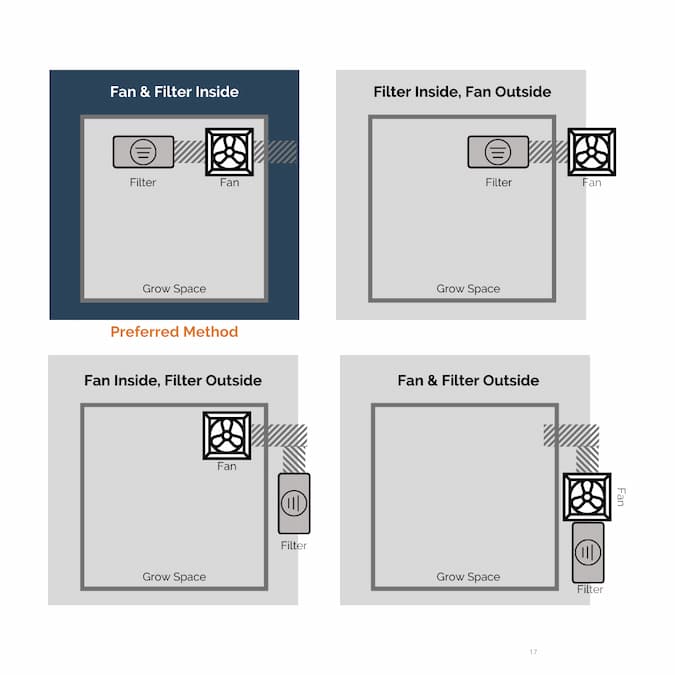
Learn more about ventilation layout here: https://www.aquagardening.com.au/learn/how-to-set-up-ventilation-in-a-grow-tent/
Check out our Indoor beginner eBook to learn more!
https://www.aquagardening.com.au/learn/indoor-beginner-ebook/
6. Choose Ducting
What the duct?
Selecting an acoustic ducting option will help to avoid hearing the ducting rattle from the high air flow. Rockwool or fibreglass ducting has anecdotally more quiet results, however dacron acoustic ducting is easier to work with if you will need to cut the duct.
Be sure to grab the right number of clamps!
Check out our Indoor beginner eBook to learn more!
https://www.aquagardening.com.au/learn/indoor-beginner-ebook/
2. Choose a Grow Tent
Selecting the Perfect Grow Tent for Your Garden
Choosing the right grow tent can make all the difference for your garden's success. Keep in mind the space you have available, your budget, and the growing needs of your plants. For those using LED lighting, a tent taller than 2 meters might not be necessary, as the additional height is most useful for HID lighting. However, if your space allows for it, Gorilla tents offer extra height and sturdiness, making them a premium choice.
We have included a rough guide for plant spacing, it is important for optimal growth and pest prevention that there is adequate airflow between plants.

Check out our Indoor beginner eBook to learn more!
https://www.aquagardening.com.au/learn/indoor-beginner-ebook/
3. Choose a Grow Light
Choosing the right grow light for your tent
LED grow lights are energy-efficient and can be customized to meet the specific needs of different plant species. They also produce less heat compared to HID grow lights, reducing the risk of plant damage or fire hazards. These lights are more expensive upfront, but they save money over the long run due to lower heat output, less power use, and the long life of the LED diodes.
HID lighting including HPS, MH, and CMH lamps have been used for indoor growing in the past, different types of HID lamps also offer differing spectrums. While HID grow lights are effective, they also generate a significant amount of heat and require proper ventilation and cooling to prevent damage to plants. Lamps should generally be replaced every few seasons so there are some ongoing costs to keep fixtures up and running.
When choosing a grow light you should consider the size of your grow space and choose a light that can adequately cover that area. You should also think about the wattage and spectrum of the light, as different plants have different light requirements. We have provided a guide for selecting the right wattage for your LED lights.


To light large tents, greater than 2m you will likely need multiple light fixtures. We have outlined the lighting options in the following article. Check it out to select the right lights: https://www.aquagardening.com.au/learn/how-to-design-grow-lights-layout/
Check out our Indoor beginner eBook to learn more!
https://www.aquagardening.com.au/learn/indoor-beginner-ebook/
4. Choose a Fan
Which fan should I choose?
Ventilation plays a vital role in managing the temperature and humidity of your growing environment, as well as refreshing the co2 in your space. There are many different options to consider when choosing a fan which we will discuss below. A major consideration for many people is the fans noise level, consider where you will have your garden to your noise preferences. Quiet and silenced fans are available, and there are aftermarket fan silencers that can be used to mitigate fan noise.
EC fans are more energy-efficient than AC fans, thanks to their use of DC power and better control of fan speed. They also have a longer lifespan and require less maintenance. However, AC fans are simpler in construction and more cost-effective.
Our included graphic shows what are the characteristics of some of the common fan designs you might choose.

Learn more about ventilation layout here: https://www.aquagardening.com.au/learn/how-to-set-up-ventilation-in-a-grow-tent/
Check out our Indoor beginner eBook to learn more!
https://www.aquagardening.com.au/learn/indoor-beginner-ebook/
5. Choose a Filter
What's the best carbon filter?
Carbon filters prevent odours from escaping indoor grow rooms. These filters consist of activated carbon that absorbs and traps the odor molecules, preventing them from escaping into the surrounding air. The air from the grow space is pulled through the filter by a fan, and the clean air is then released back into the room. Using a larger (longer) carbon filter will improve longevity.

Learn more about ventilation layout here: https://www.aquagardening.com.au/learn/how-to-set-up-ventilation-in-a-grow-tent/
Check out our Indoor beginner eBook to learn more!
https://www.aquagardening.com.au/learn/indoor-beginner-ebook/
6. Choose Ducting
What the duct?
Selecting an acoustic ducting option will help to avoid hearing the ducting rattle from the high air flow. Rockwool or fibreglass ducting has anecdotally more quiet results, however dacron acoustic ducting is easier to work with if you will need to cut the duct.
Be sure to grab the right number of clamps!
Check out our Indoor beginner eBook to learn more!
https://www.aquagardening.com.au/learn/indoor-beginner-ebook/
2. Choose a Grow Tent
Selecting the Perfect Grow Tent for Your Garden
Choosing the right grow tent can make all the difference for your garden's success. Keep in mind the space you have available, your budget, and the growing needs of your plants. For those using LED lighting, a tent taller than 2 meters might not be necessary, as the additional height is most useful for HID lighting. However, if your space allows for it, Gorilla tents offer extra height and sturdiness, making them a premium choice.
We have included a rough guide for plant spacing, it is important for optimal growth and pest prevention that there is adequate airflow between plants.

Check out our Indoor beginner eBook to learn more!
https://www.aquagardening.com.au/learn/indoor-beginner-ebook/
3. Choose a Grow Light
Choosing the right grow light for your tent
LED grow lights are energy-efficient and can be customized to meet the specific needs of different plant species. They also produce less heat compared to HID grow lights, reducing the risk of plant damage or fire hazards. These lights are more expensive upfront, but they save money over the long run due to lower heat output, less power use, and the long life of the LED diodes.
HID lighting including HPS, MH, and CMH lamps have been used for indoor growing in the past, different types of HID lamps also offer differing spectrums. While HID grow lights are effective, they also generate a significant amount of heat and require proper ventilation and cooling to prevent damage to plants. Lamps should generally be replaced every few seasons so there are some ongoing costs to keep fixtures up and running.
When choosing a grow light you should consider the size of your grow space and choose a light that can adequately cover that area. You should also think about the wattage and spectrum of the light, as different plants have different light requirements. We have provided a guide for selecting the right wattage for your LED lights.


To light large tents, greater than 2m you will likely need multiple light fixtures. We have outlined the lighting options in the following article. Check it out to select the right lights: https://www.aquagardening.com.au/learn/how-to-design-grow-lights-layout/
Check out our Indoor beginner eBook to learn more!
https://www.aquagardening.com.au/learn/indoor-beginner-ebook/
4. Choose a Fan
Which fan should I choose?
Ventilation plays a vital role in managing the temperature and humidity of your growing environment, as well as refreshing the co2 in your space. There are many different options to consider when choosing a fan which we will discuss below. A major consideration for many people is the fans noise level, consider where you will have your garden to your noise preferences. Quiet and silenced fans are available, and there are aftermarket fan silencers that can be used to mitigate fan noise.
EC fans are more energy-efficient than AC fans, thanks to their use of DC power and better control of fan speed. They also have a longer lifespan and require less maintenance. However, AC fans are simpler in construction and more cost-effective.
Our included graphic shows what are the characteristics of some of the common fan designs you might choose.

Learn more about ventilation layout here: https://www.aquagardening.com.au/learn/how-to-set-up-ventilation-in-a-grow-tent/
Check out our Indoor beginner eBook to learn more!
https://www.aquagardening.com.au/learn/indoor-beginner-ebook/
5. Choose a Filter
What's the best carbon filter?
Carbon filters prevent odours from escaping indoor grow rooms. These filters consist of activated carbon that absorbs and traps the odor molecules, preventing them from escaping into the surrounding air. The air from the grow space is pulled through the filter by a fan, and the clean air is then released back into the room. Using a larger (longer) carbon filter will improve longevity.

Learn more about ventilation layout here: https://www.aquagardening.com.au/learn/how-to-set-up-ventilation-in-a-grow-tent/
Check out our Indoor beginner eBook to learn more!
https://www.aquagardening.com.au/learn/indoor-beginner-ebook/
6. Choose Ducting
What the duct?
Selecting an acoustic ducting option will help to avoid hearing the ducting rattle from the high air flow. Rockwool or fibreglass ducting has anecdotally more quiet results, however dacron acoustic ducting is easier to work with if you will need to cut the duct.
Be sure to grab the right number of clamps!
Check out our Indoor beginner eBook to learn more!
https://www.aquagardening.com.au/learn/indoor-beginner-ebook/
2. Choose a Grow Tent
Selecting the Perfect Grow Tent for Your Garden
Choosing the right grow tent can make all the difference for your garden's success. Keep in mind the space you have available, your budget, and the growing needs of your plants. For those using LED lighting, a tent taller than 2 meters might not be necessary, as the additional height is most useful for HID lighting. However, if your space allows for it, Gorilla tents offer extra height and sturdiness, making them a premium choice.
We have included a rough guide for plant spacing, it is important for optimal growth and pest prevention that there is adequate airflow between plants.

Check out our Indoor beginner eBook to learn more!
https://www.aquagardening.com.au/learn/indoor-beginner-ebook/
3. Choose a Grow Light
Choosing the right grow light for your tent
LED grow lights are energy-efficient and can be customized to meet the specific needs of different plant species. They also produce less heat compared to HID grow lights, reducing the risk of plant damage or fire hazards. These lights are more expensive upfront, but they save money over the long run due to lower heat output, less power use, and the long life of the LED diodes.
HID lighting including HPS, MH, and CMH lamps have been used for indoor growing in the past, different types of HID lamps also offer differing spectrums. While HID grow lights are effective, they also generate a significant amount of heat and require proper ventilation and cooling to prevent damage to plants. Lamps should generally be replaced every few seasons so there are some ongoing costs to keep fixtures up and running.
When choosing a grow light you should consider the size of your grow space and choose a light that can adequately cover that area. You should also think about the wattage and spectrum of the light, as different plants have different light requirements. We have provided a guide for selecting the right wattage for your LED lights.


To light large tents, greater than 2m you will likely need multiple light fixtures. We have outlined the lighting options in the following article. Check it out to select the right lights: https://www.aquagardening.com.au/learn/how-to-design-grow-lights-layout/
Check out our Indoor beginner eBook to learn more!
https://www.aquagardening.com.au/learn/indoor-beginner-ebook/
4. Choose a Fan
Which fan should I choose?
Ventilation plays a vital role in managing the temperature and humidity of your growing environment, as well as refreshing the co2 in your space. There are many different options to consider when choosing a fan which we will discuss below. A major consideration for many people is the fans noise level, consider where you will have your garden to your noise preferences. Quiet and silenced fans are available, and there are aftermarket fan silencers that can be used to mitigate fan noise.
EC fans are more energy-efficient than AC fans, thanks to their use of DC power and better control of fan speed. They also have a longer lifespan and require less maintenance. However, AC fans are simpler in construction and more cost-effective.
Our included graphic shows what are the characteristics of some of the common fan designs you might choose.

Learn more about ventilation layout here: https://www.aquagardening.com.au/learn/how-to-set-up-ventilation-in-a-grow-tent/
Check out our Indoor beginner eBook to learn more!
https://www.aquagardening.com.au/learn/indoor-beginner-ebook/
5. Choose a Filter
What's the best carbon filter?
Carbon filters prevent odours from escaping indoor grow rooms. These filters consist of activated carbon that absorbs and traps the odor molecules, preventing them from escaping into the surrounding air. The air from the grow space is pulled through the filter by a fan, and the clean air is then released back into the room. Using a larger (longer) carbon filter will improve longevity.

Learn more about ventilation layout here: https://www.aquagardening.com.au/learn/how-to-set-up-ventilation-in-a-grow-tent/
Check out our Indoor beginner eBook to learn more!
https://www.aquagardening.com.au/learn/indoor-beginner-ebook/
6. Choose Ducting
What the duct?
Selecting an acoustic ducting option will help to avoid hearing the ducting rattle from the high air flow. Rockwool or fibreglass ducting has anecdotally more quiet results, however dacron acoustic ducting is easier to work with if you will need to cut the duct.
Be sure to grab the right number of clamps!
Check out our Indoor beginner eBook to learn more!
https://www.aquagardening.com.au/learn/indoor-beginner-ebook/
2. Choose a Grow Tent
Selecting the Perfect Grow Tent for Your Garden
Choosing the right grow tent can make all the difference for your garden's success. Keep in mind the space you have available, your budget, and the growing needs of your plants. For those using LED lighting, a tent taller than 2 meters might not be necessary, as the additional height is most useful for HID lighting. However, if your space allows for it, Gorilla tents offer extra height and sturdiness, making them a premium choice.
We have included a rough guide for plant spacing, it is important for optimal growth and pest prevention that there is adequate airflow between plants.

Check out our Indoor beginner eBook to learn more!
https://www.aquagardening.com.au/learn/indoor-beginner-ebook/
3. Choose a Grow Light
LED Grow Lights
HID Grow Lights
Choosing the right grow light for your tent
LED grow lights are energy-efficient and can be customized to meet the specific needs of different plant species. They also produce less heat compared to HID grow lights, reducing the risk of plant damage or fire hazards. These lights are more expensive upfront, but they save money over the long run due to lower heat output, less power use, and the long life of the LED diodes.
HID lighting including HPS, MH, and CMH lamps have been used for indoor growing in the past, different types of HID lamps also offer differing spectrums. While HID grow lights are effective, they also generate a significant amount of heat and require proper ventilation and cooling to prevent damage to plants. Lamps should generally be replaced every few seasons so there are some ongoing costs to keep fixtures up and running.
When choosing a grow light you should consider the size of your grow space and choose a light that can adequately cover that area. You should also think about the wattage and spectrum of the light, as different plants have different light requirements. We have provided a guide for selecting the right wattage for your LED lights.


To light large tents, greater than 2m you will likely need multiple light fixtures. We have outlined the lighting options in the following article. Check it out to select the right lights: https://www.aquagardening.com.au/learn/how-to-design-grow-lights-layout/
Check out our Indoor beginner eBook to learn more!
https://www.aquagardening.com.au/learn/indoor-beginner-ebook/
4. Choose a Fan
Which fan should I choose?
Ventilation plays a vital role in managing the temperature and humidity of your growing environment, as well as refreshing the co2 in your space. There are many different options to consider when choosing a fan which we will discuss below. A major consideration for many people is the fans noise level, consider where you will have your garden to your noise preferences. Quiet and silenced fans are available, and there are aftermarket fan silencers that can be used to mitigate fan noise.
EC fans are more energy-efficient than AC fans, thanks to their use of DC power and better control of fan speed. They also have a longer lifespan and require less maintenance. However, AC fans are simpler in construction and more cost-effective.
Our included graphic shows what are the characteristics of some of the common fan designs you might choose.

Learn more about ventilation layout here: https://www.aquagardening.com.au/learn/how-to-set-up-ventilation-in-a-grow-tent/
Check out our Indoor beginner eBook to learn more!
https://www.aquagardening.com.au/learn/indoor-beginner-ebook/
5. Choose a Filter
What's the best carbon filter?
Carbon filters prevent odours from escaping indoor grow rooms. These filters consist of activated carbon that absorbs and traps the odor molecules, preventing them from escaping into the surrounding air. The air from the grow space is pulled through the filter by a fan, and the clean air is then released back into the room. Using a larger (longer) carbon filter will improve longevity.

Learn more about ventilation layout here: https://www.aquagardening.com.au/learn/how-to-set-up-ventilation-in-a-grow-tent/
Check out our Indoor beginner eBook to learn more!
https://www.aquagardening.com.au/learn/indoor-beginner-ebook/
6. Choose Ducting
What the duct?
Selecting an acoustic ducting option will help to avoid hearing the ducting rattle from the high air flow. Rockwool or fibreglass ducting has anecdotally more quiet results, however dacron acoustic ducting is easier to work with if you will need to cut the duct.
Be sure to grab the right number of clamps!
Check out our Indoor beginner eBook to learn more!
https://www.aquagardening.com.au/learn/indoor-beginner-ebook/
Browse Accessories
Choose from a curated range of our indoor gardening accessories: to get started we recommend a timer you can use with your lights, a thermometer/hygrometer, and a clip fan to move air around the grow space.

.png)
.png)